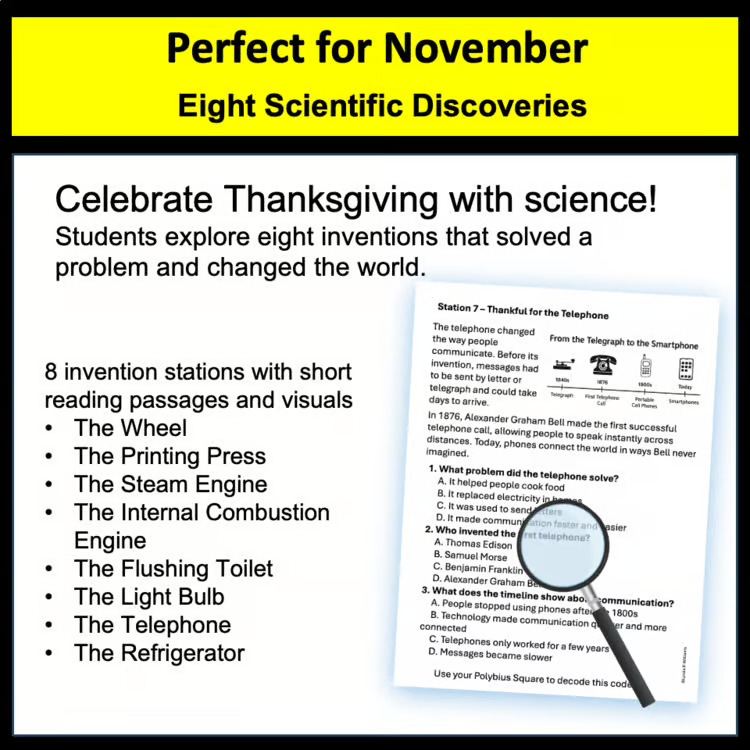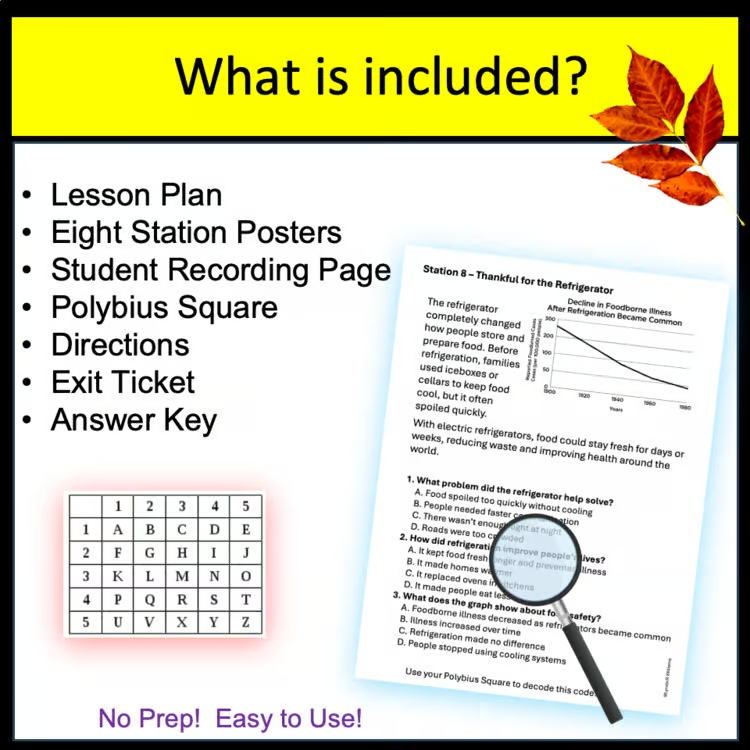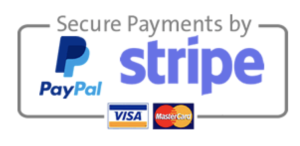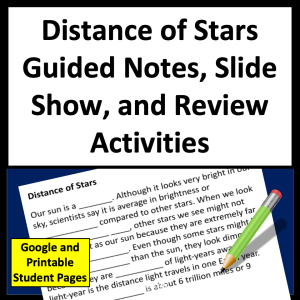Description
Give your November lessons a spark of creativity with this Thankful for Inventions Crack the Code Science Activity for Thanksgiving!
Students travel through 8 interactive science stations, each highlighting an invention that transformed the way we live — from the wheel and printing press to the light bulb and refrigerator.
At each station, students:
- Read a short passage about the invention
- Examine a graph, timeline, or diagram
- Answer three multiple-choice questions
- Record their answers to reveal a hidden word at the end
This low-prep resource brings together STEM history, data analysis, and literacy skills, all wrapped in a Thanksgiving theme focused on innovation and gratitude.
✨ What’s Included
- 8 science and inventions stations
- The Wheel
- The Printing Press
- The Steam Engine
- The Internal Combustion Engine
- The Flushing Toilet
- The Light Bulb
- The Telephone
- The Refrigerator
- Student recording sheet with code grid
- Answer key
- Mini lesson plan with discussion ideas
- Exit ticket reflection: “One invention I’m thankful for is…”
🎯 Skills Covered
- Reading and interpreting graphs, diagrams, and timelines
- Making connections between science, technology, and society
- Practicing problem-solving and data interpretation
- Reflecting on gratitude and innovation
🍂 Perfect For
✔ Thanksgiving week science lessons
✔ STEM enrichment and critical thinking activities
✔ Early finishers or sub plans
✔ Cross-curricular science and history connections
💡 Teacher Favorite
Students love solving the mystery and discovering how each invention changed daily life.
Teachers love the easy prep, real-world connections, and built-in reflection on gratitude and progress.
Connects to:
- Analyzing and Interpreting Data (SEP 4): Students interpret graphs, timelines, and diagrams for each invention.
- Constructing Explanations (SEP 6): Students connect how each invention solved a problem or improved life.
- Obtaining, Evaluating, and Communicating Information (SEP 8): Students read informational text and use evidence to answer questions and decode clues.
3-5-ETS1: Engineering Design
- 3-5-ETS1-1: Define a simple design problem reflecting a need or a want that includes specified criteria for success and constraints.
- 3-5-ETS1-2: Generate and compare multiple possible solutions to a problem based on how well each meets the criteria and constraints.
MS-ETS1: Engineering Design
- MS-ETS1-1: Define criteria and constraints of a design problem with sufficient precision to ensure a successful solution.
- MS-ETS1-2: Evaluate competing design solutions using a systematic process.
- MS-ETS1-3: Analyze data from tests to determine similarities and differences among several design solutions.









